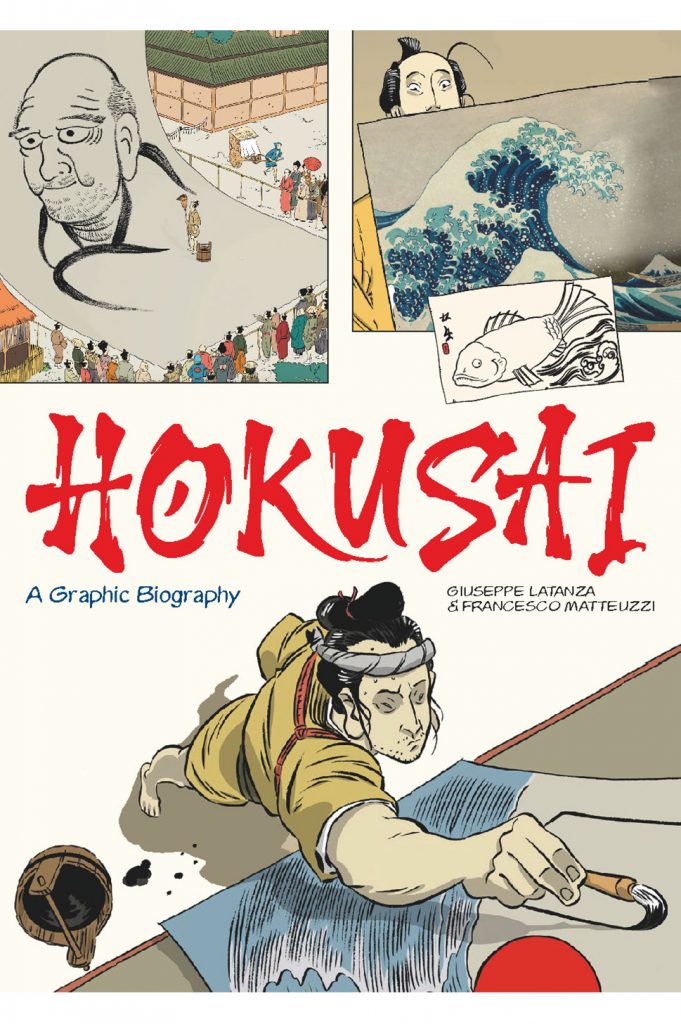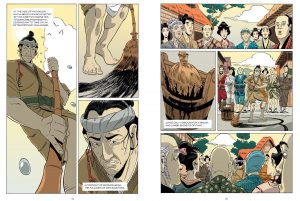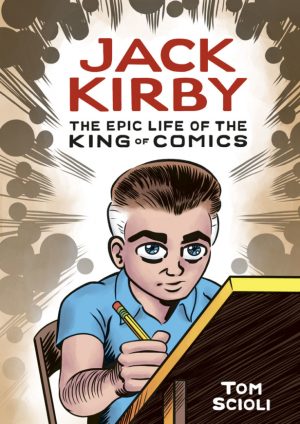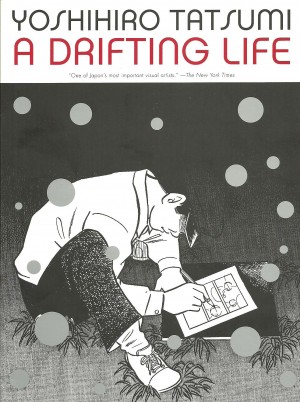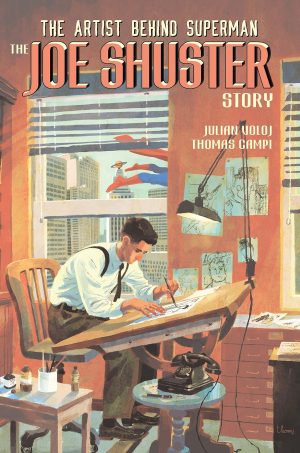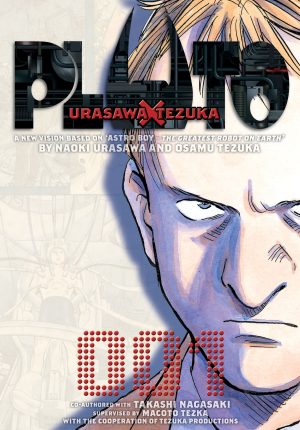Review by Graham Johnstone
Some readers will know the name Hokusai, but many more will recognise his iconic wave image, seen towards the top right of the cover.
Katsushika Hokusai is the most famous artist of the Japanese Ukiyo-e (or ‘Floating World’): a loose genre of Japanese popular art, spanning the 17th to 19th Centuries. Hokusai’s own career lasted several decades, towards the end of that period. He also covered the various roles in the industry, and subjects in the genre, meaning his biography doubles as an effective primer on Ukiyo-e.
Writer Francesco Matteuzzi includes some fascinating insights on the process behind Ukiyo-e prints, which have striking similarities to modern comics. As an apprentice in a studio, Hokusai has to render the woodblocks for images created by others, mirroring comics’ inker/penciller division of labour. Hokusai produced sets of themed drawings gathered in books called manga. Some projects involved writers, with resulting tensions over content and contribution. Hokusai even had a foray into erotica, which would have been quite at home in American Underground Comix. This adds up to a fascinating glimpse into a world balancing creativity with commerce, and so very different from the impoverished life of European avant-gardists, seen in Vincent and Pablo.
Biographies typically open with a key moment, but Matteuzzi opts for eight-pages covering 4000 years of the city of Edo (now Tokyo). It improves with the artist’s birth, deftly suggesting illicit circumstances. Thereafter, the book captures the highlights of a legendary life, in a series of well dramatised scenes, with occasional connective captions. We see Hokusai assisting his artisan father, then apprenticed to masters, trading his skills, becoming a studio manager, then setting up on his own. Over the course of this we track his changes of imagery and media, from a giant Buddha on a banner (cover image), to ‘birds in flight’ on a grain of rice. The details and scenes are good, but lacking the powerful story arc of a novel. Even a major catastrophe falls flat, as it appears suddenly, without foreshadowing, or establishing stakes. A neighbour responds with shelter and tea, creating a poignant moment. However this is interrupted by a text page on ‘The Tea Ceremony’, the most intrusive of a score peppered through the book in which some entertaining and informative scenes are bookended by a weak start and finish.
Giuseppe Latanza is an impressive illustrator. His afterword notes that he tailored his style for this project, and it looks credibly Japanese, though closer to historic and contemporary ink drawing (e.g. in Manga), than the telltale sturdy lines of Hokusai woodcuts. Latanza’s figures are elegant and expressive, and the settings suitably evocative of Ukiyo-e imagery. However he often sticks to the prosaically literal, and drawings of men in kimonos talking, become repetitive. This highlights missed visual opportunities, perhaps channelling the inspirations of Ukiyo-e: Kabuki actors, Sumo wrestlers and samurai, geishas and courtesans. We don’t even see Hokusai creating his ‘Thirty-Six Views of Mount Fuji’, which includes the iconic wave. The autumn tints (pictured) pall over a whole book, reinforcing the sense we’re not seeing Latanza’s art to best effect.
The inclusion of twenty pages of text, and as many more of single image spreads, suggesting padding to reach a page count. There’s some frustration that the same creators could have delivered better, but there’s plenty packed into the remaining 80 pages to create a vivid and fascinating account of Hokusai and Ukiyo-e.
Both creators have produced similar works: Matteuzzi wrote the graphic biography of abstract painter Mark Rothko, recently released in English, and Latanza has illustrated a book on Surrealism it’s hoped will follow.
